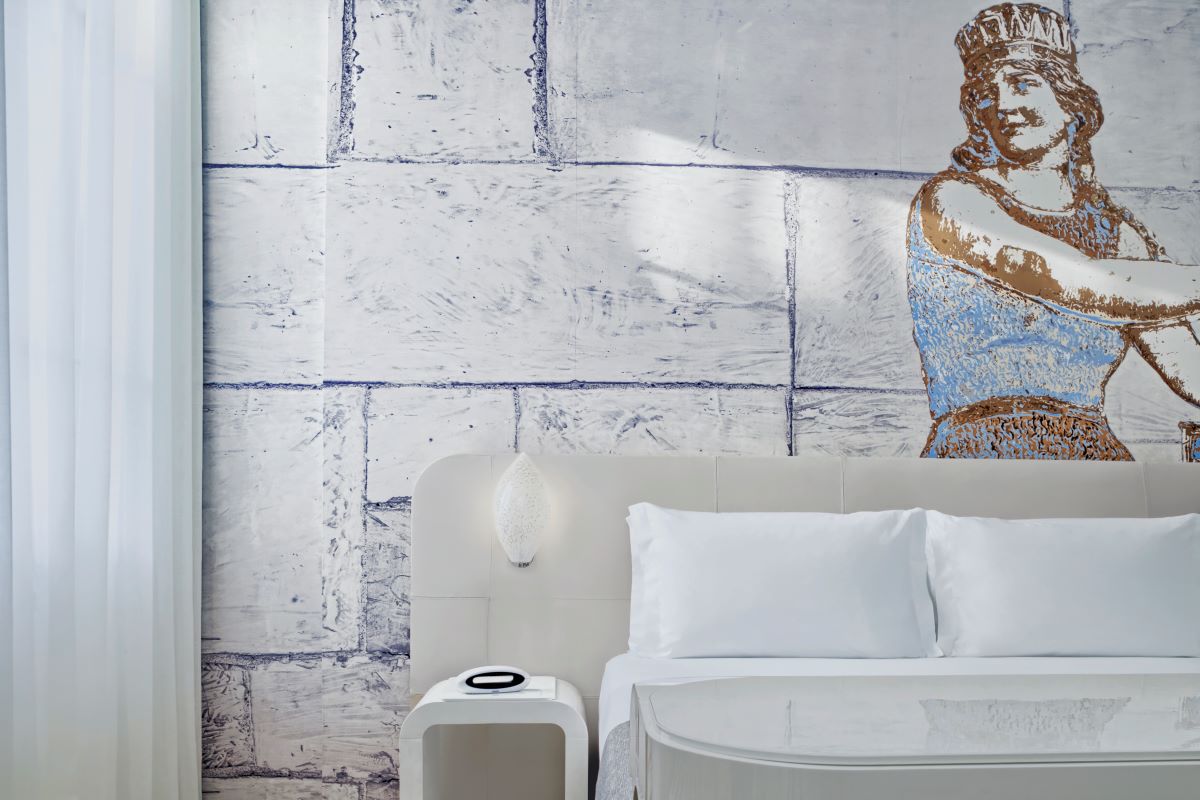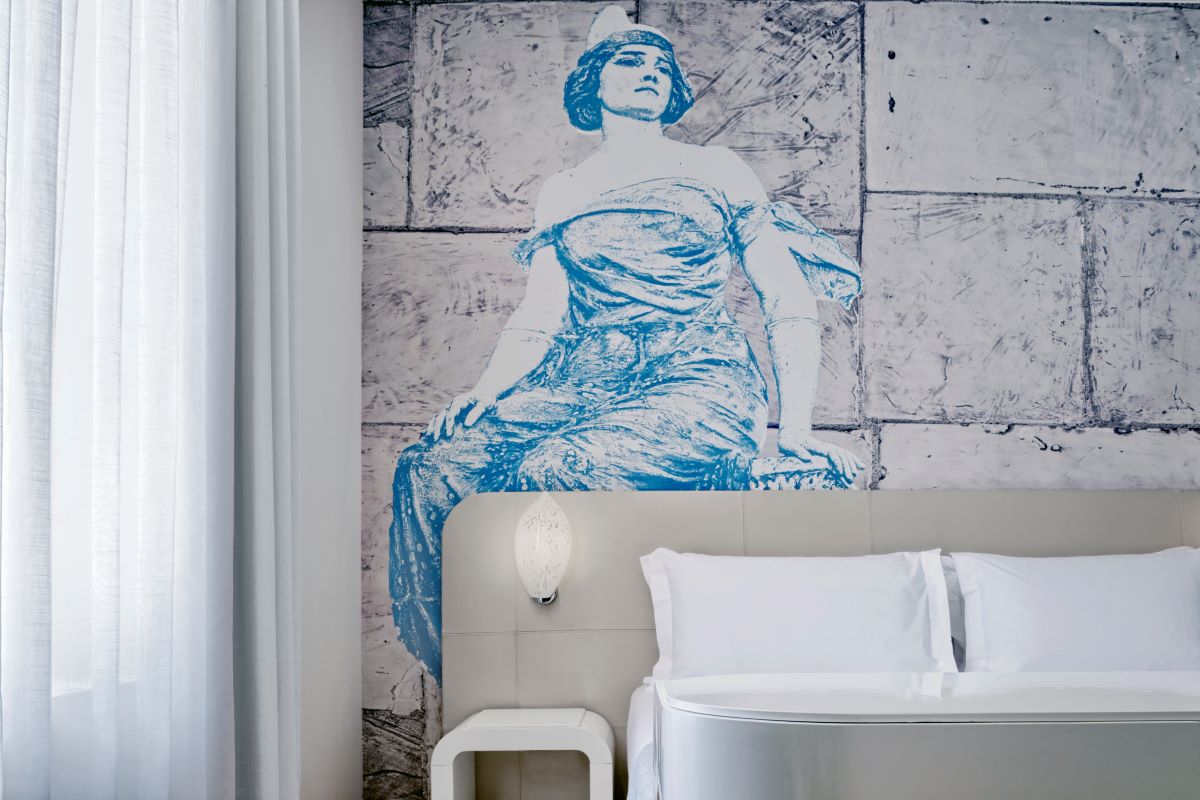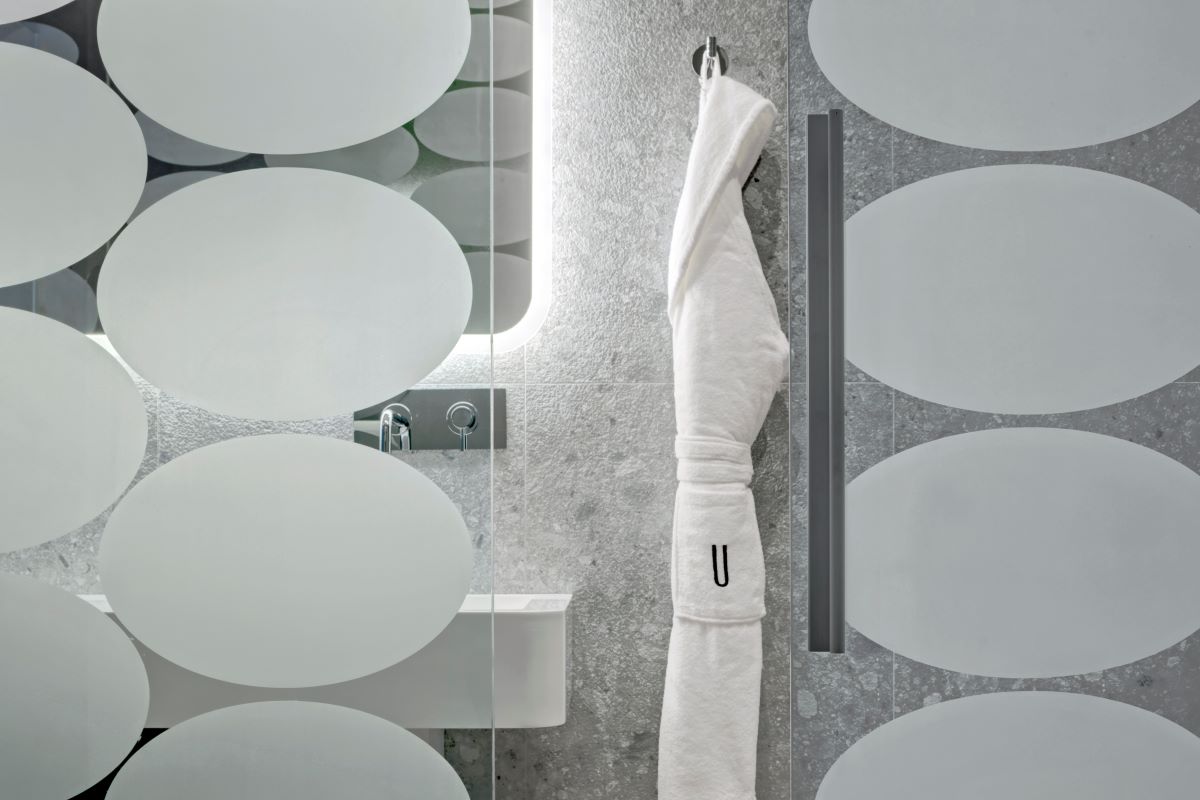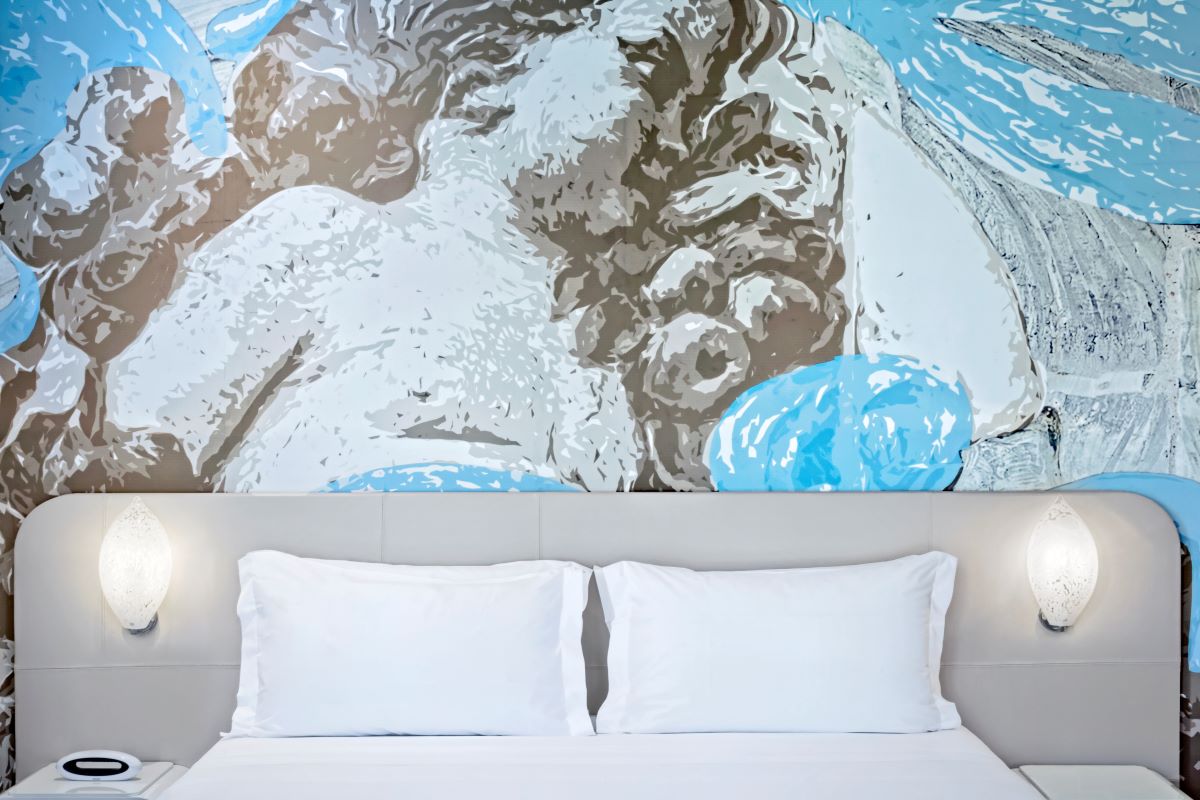Thanks to a lively cultural life and also due to the international resonance of the Film Festival, the Venice Lido has become one of the most important place for art and culture, a universe that fascinates and enchants its visitors from around the world.
Beauty and charm characterise the iconic hotel Ausonia Hungaria, inaugurated in 1907 and become an exclusive reference point for the Venetian hospitality even today thanks to the new owner Teodoro Russo, who promoted a huge restoration to relaunch the building.

For example, the coating of the east facade that didn’t have any decoration, has been entrusted to the eclectic British pop artist Joe Tilson, through the application of polychrome panels in Murano glass: the intervention aims to dialogue with the particular covering of the main facade created with majolica tiles by the ceramist Luigi Fabris in 1913.
On the other hand, the architect Simone Micheli has masterfully directed the project of the interior and the lighting design, inspired by the idea of “Gesamtkunstwerk” in the writings and the works of Richard Wagner: starting from the concept of an organic work, the intervention was aimed at transforming the interior spaces of the hotel into a true work of art to be experienced, in which man becomes the nerve center.
The hotel rooms are characterized by franciscan furniture with linear and fluid forms, composed of different but complementary materials; the soft colours are enlivened by touches of vivacity, while the extraordinary plays of light, dictated by a very careful lighting direction, contribute to the definition of spaces, environments and functions: as soon as the entrance is crossed, the visitor feels welcomed in another environment that is precious, fascinating, and created to satisfy his desire for well-being.

On the walls of the rooms, iconic pictures by Maurizio Marcato are a reinterpretation of the exterior facade, emphasizing the details and highlighting its peculiarities: the photography is able to generate a complete and perfectly integrated fusion of interior and exterior spaces, blending the vitality and energy of what is outside with the magical atmosphere of the inside, erasing differences and encouraging combinations and encounters.
The bathroom represents a break, a pause, an arrival point where one’s attention can be focused on well-being without being misled by the outside world: the grey ceramic material dominates the space while the white furnishings are attractive centres, catalysts of emotions; in addition, there is no real physical separation between the bathroom and the other room: it is the ethereal structure generated by shapes and colours that determines this space, a closed environment in which man can take shelter and enjoy his own time.

The leitmotif appears in the entire structure and even the corridor mirrors this intense tension between opposite forces (outside and inside, past and future, fullness and emptiness); moreover a wise lighting design direction enables the guest to feel as if suspended in a dimension in which the traditional space-time coordinates are lost.
While the furnishings have a futuristic look and their forms convey calmness to the soul making it feel welcome, along the walls the images of the faces and places that have made the history of cinema follow one another, recalling the great importance of this place; pictures of the Lido area compose the pavement giving the guest the feeling of walking along the roofs of the city, exploring its hidden corners.
In the common areas historical heritage and avant-garde design do not cease to merge, blending history with new enveloping shapes, clean spaces, and refined details; the large hall welcomes guests offering privacy despite the passage area, while the faces of men and women enliven the office rooms.

The bar, the restaurant, the glass room and the roof-bar are places where thought can relax, the mind can be open and nourish well-being, fun, and pleasure of the senses; a mystical and unique atmosphere that is able to place man at the center of space is eventually originated; finally, on the top floor, on a wooden terrace, the guest can feel free and experience a wonderful view of Venice.
An hotel-opera that encourages reflection on the contemporary art scene takes shape: it is an urban masterpiece of art and architecture that promotes experimentation and progress and it also becomes a symbol and a stimulus for the redevelopment of other accommodation facilities.
Photography is by Andrea Sarti.


